China: Submetropolis of imperialist capital
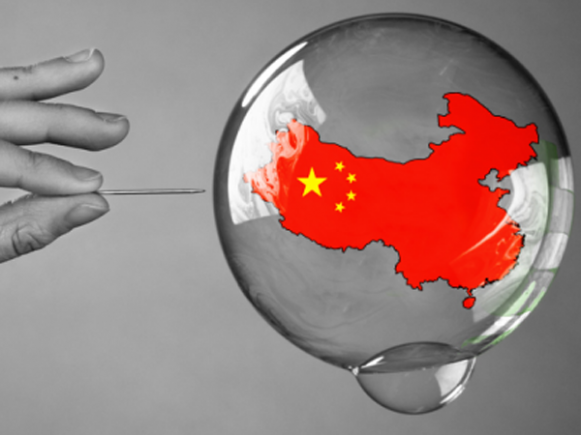
By Daniel Campos- The Marx International
One of the main debates within the global left is about China, a topic on which the global left oscillates between two positions: Some argue that China is still a "socialist" country , with varying degrees of support, from those who claim it is still a workers' state to those who speak of "market socialism ." On the other hand, there are those who claim that China is an imperialist country, competing with the US for dominance of the global capitalist economy. Both positions are erroneous and are a significant contributor to the crisis of the global left.
China is a capitalist country, and its position in the international division of labor is that of a submetropolis of imperialist capital. The confusion of the global left stems from the impact of a new phenomenon, the emergence of submetropolises of imperialist capital. Capitalist and pseudo-Marxist economists act in an impressionistic manner, shocked and confused by the BRICS phenomenon, a word that is an acronym for the letters of the countries Brazil , Russia , India , China , and South Africa, countries that receive heavy investments from imperialist capital and outsource that capital to smaller economies.
Capitalist and pseudo-Marxist economists are quick to label sub-metropolises as imperialist countries because they don't understand what they are or what role they play. Left-wing groups lack a complete understanding of the current structure of imperialist capitalism, amid a process of rupture with Marxism and growing political illiteracy among the groups' leaders. Sub-metropolises are countries dependent on imperialist capital that, in turn, act as headquarters for smaller economies.
The sub-metropolis acts by redistributing global investments, placing them under its banner and protection, and facilitates competition to develop the profits of the sub-metropolis's oligarchy. All this illiteracy, ignorance, and lack of rigor and seriousness in the analysis of 99% of the global left leads them to ignore the true character of China and to formulate absurd positions on China that include ignoring the colossal crisis China is experiencing, expressed in the monumental speculative mortgage bubble of more than $30 trillion. Trapped in the real estate bubble it has created, and cannot dismantle, the Chinese capitalist oligarchy, far from being a social class capable of fighting for global supremacy, struggles daily to prevent China's collapse by deepening its partnership with US imperialism.
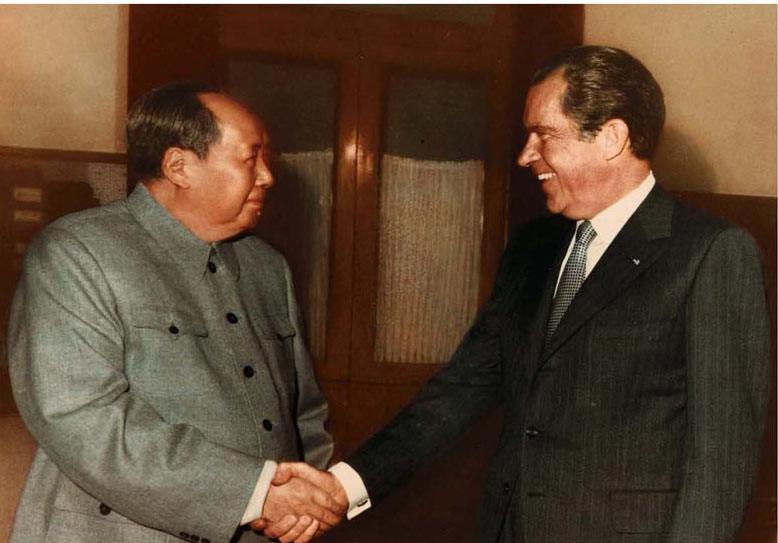
The postwar period: From a workers' state to a capitalist semi-colony
To understand how China came to be a sub-metropolis and to grasp the magnitude of the crisis brewing in China, the first step is to understand how China transitioned from a workers' state to capitalism. This process began with the agreements reached between US President Richard Nixon and Chinese leader Mao Tse-Tung between February 21 and 28, 1972, which were motivated by the triumph of the People's National Liberation War in Vietnam. The advances of the Vietnamese forces provoked an enormous crisis for both the imperialist government of Richard Nixon and Mao's government. The military victories of the Vietnamese militias represented a brutal blow to US imperialism that subsequently led to Nixon's downfall. For China, it meant the outbreak of revolution in Southeast Asia, an element that Mao's Stalinist bureaucracy feared would challenge the power of the CCP bureaucrats. The Nixon-Mao agreement involved intervention by CCP bureaucrats in the Vietnamese revolution to stop it, in exchange for which Nixon began a process of investment and economic aid for China.
China was suffering an economic and political collapse caused by the failure of the "Great Leap Forward" economic plan, which caused a massive famine that killed between 30 and 45 million people between 1958 and 1962, a failure that led to the downfall of Mao. This was followed by the "Cultural Revolution" , a violent civil war that included violent confrontations between different wings of the apparatus of the Stalinist Communist Party of China (CPC), which allowed Mao to regain power in exchange for the destruction of much of the CPC's Stalinist structure. The Stalinist bureaucracy of the CPC emerged from the "Cultural Revolution", consolidating its definitive form as a counterrevolutionary dictatorship supported by the military, defending the privileges and interests of the CPC's caste of bureaucrats and the state against the people.
However, the Stalinist-Maoist dictatorship was rudderless and unable to reverse the country's crisis. Following Mao's death on September 9, 1976, Deng Xiaoping came to power at the 11th Congress of the CCP Central Committee in December 1978. The CCP bureaucracy under Deng's leadership initiated China's transition to capitalism by launching the plan to establish "special economic zones" (SEZs), regions where the government allowed the establishment of imperialist investments, facilitating the exploitation of labor and waiving taxes to make business more attractive to large multinational corporations. The SEZs served as a magnet for foreign direct investment (FDI) to create an industrial base primarily for export, where the government applied legislation that was different from the rest of the country and served as an incentive for businesses and capital. Associations between national and foreign companies, the "Joint Ventures", were authorized, an entire economic model that Maoist Stalinism called "socialism with Chinese characteristics".
Officials in Guangdong Province, led by their CCP Provincial Secretary Xi Zhongxun, took the initiative and were the first to launch investment projects involving Hong Kong-based companies in January 1979. In April of that same year, they presented a proposal to Beijing to facilitate foreign investment in four cities: Shenzhen in the Pearl River Delta, Zhuhai, Shantou, and Xiamen. The Chinese leader approved the proposal and the projects were launched on August 26, 1979. From then on, Deng Xiaoping used Hong Kong as a platform for capital inflows, allowing foreign direct investment (FDI) to flow in, and giving imperialist capital every political opportunity to enter the Chinese economy.
The Stalinist-Maoist regime also launched the slogan "one country, two systems" which in 1984 Deng Xiaoping proposed to apply to Hong Kong in the negotiations with the Prime Minister of Great Britain Margaret Thatcher and the same principle was also proposed in the conversations with Portugal about the colony of Macau. The incorporation of capitalism produced a recovery of the Chinese economy to the extent that China began a process of semi-colonization, exactly the same process that had been suffered by all the old colonies of the world that after long revolutions of national liberation had achieved national independence.
The old pre-existing colonies in Southeast Asia such as India, Indochina, Africa, the Middle East or Latin America disappeared through national liberation revolutions and nations emerged that constituted a new category that was the semi-colony, in which, while the country has a regime relatively independent of imperialism in the political field because it no longer has a viceroy, or one sent directly from the metropolis, the ruling classes of those nations do business with multinationals and imperialism. Multinationals are the monopolistic forms of accumulation typical of the post-war period; their development allowed colonies to transform into semi-colonies, that is, countries with a relatively independent political regime and status that are at the same time deeply dependent on imperialist capital and investments.
Multinational corporations are companies that dominate a branch of production, trade, or industry on a global scale under the undisputed dominance of United States imperialism. They emerged globally and came to dominate the world economy after the establishment of the Keynesian regime of postwar capitalist accumulation. This regime was based on the Marshall Plan and the Yalta and Potsdam agreements, which made possible the reconstruction of Europe and the postwar boom . However, the postwar Keynesian regime also entered its phase of exhaustion in the 1970s, which opened up a massive chronic crisis with a permanent fall in the rate of profit caused by the overaccumulation of capital generated by multinationals, combined with the struggles and revolutions around the world, and the imperialist defeat in Vietnam.
The crisis of the Keynesian capitalist regime led imperialism to attempt to establish a new regime of global capitalist accumulation to supersede the exhausted post-war Keynesian regime. All the Stalinist regimes around the world pursued the same strategy of implementing plans for the restoration of capitalism in Eastern Europe, Cuba, Vietnam, and Korea, which sought to transform workers' states into imperialist semi-colonies. Thus, a new regime of global capitalist accumulation known as "Neoliberalism" or Globalization emerged in the 1980s, which, in turn, provoked a new change in the economic and political structure of all countries, and, of course, also in China, allowing it to transform from a semi-colony into a sub-metropolis of imperialist capital.
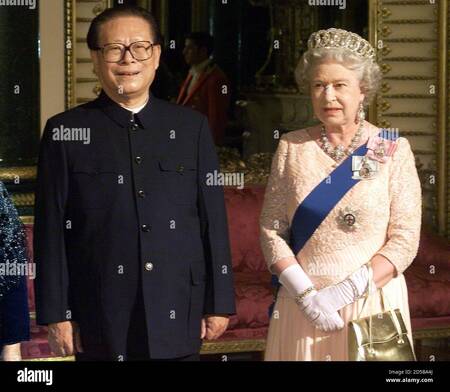
Globalization: From semi-colony to sub-metropolis
Global imperialism, building on the massive destruction of productive forces in Southeast Asia through the Vietnam and Indochina Wars, China's Great Leap Forward, and so on, was able to advance in establishing a new regime of global capitalist accumulation: Neoliberalism or Globalization, which emerged in the 1980s. This shift in the accumulation regime led to a new shift in the global economic and political structure with the emergence of global corporations, the new forms of capitalist accumulation that emerged, companies that dominate various branches of industry, commerce, and finance on a global scale, and control mergers and acquisitions (M&A).
In this regime of accumulation, the process of capital concentration, accumulation, and overaccumulation reached colossal global levels. Just a handful of corporations such as JP Morgan Chase, Goldman Sachs, Bank of America, Citigroup, Deutsche Bank, Barclays, BNP Paribas, UBS, or Wells Fargo, known as "bulge brackets" in financial jargon, came to control the global process of capital circulation by supporting M&A processes. The accumulation process entailed a mass of derivative contracts and fictitious capital that reached a staggering $1 trillion according to data from the Bank of Basel, equivalent to 10 times the world's GDP. This entire process of capital centralization gave rise to the aristocracy of the 1% oligarchy that dominates the global economy. The flip side of the wealth concentration process brought about by globalization is the billions of people living in poverty across five continents, one of the most shocking figures of inequality in the history of capitalism.
Globalization entailed a violent exploitative offensive by all governments defending capitalism: imperialist governments, semi-colonial governments, and the Stalinist governments of the former socialist countries that were introducing capitalism. This exploitative offensive entailed the dismantling of all the social and economic gains of the Keynesian regime and a global privatization process. People around the world took to the streets to confront inflation, the rising cost of living, rising poverty, and the brutal starvation plans of capitalist governments. In the "former socialist" countries where the Stalinist regimes were introducing capitalist measures to transform them into semi-colonies, revolutionary mobilizations erupted against this brutal exploitative offensive. The chain of popular uprisings deepened and after the Stalinist collapse in the countries of Eastern Europe, the dictatorships in the USSR and the republics under its control fell apart between 1989 and 1992.
The G7 governments, analysts, and journalists of all stripes proclaimed that the fall of the Berlin Wall and the Stalinist regimes meant the "triumph of capitalism" and the "End of Socialism ." Many believed this story, but the reality was the opposite. The workers and people of Eastern Europe who overthrew the Stalinist dictatorships were not facing "socialism," although millions were mistaken for thinking they were facing socialism, given that the regimes they were confronting declared themselves "socialist." In reality, they were facing the capitalist offensive of the Stalinists, who were transforming those countries into capitalist semi-colonies. All the revolutions of 1989 and 1990 triumphed, but there was one place where the revolution was defeated: China.
In China, the opposite happened. There, the Berlin Wall did not fall; the mass mobilization in Tiannanmen Square against the pro-capitalist dictatorship of the Chinese Communist Party was brutally repressed and defeated. Following these events, China consolidated its position as a "paradise" for multinational corporations, and the entire process of China's transition from a workers' state to capitalism accelerated, completing the process of semi-colonization. The Stalinist regime of the CCP began to emerge as an increasingly clear capitalist oligarchy and developed an increasingly violent process of repression against the masses, which allowed it to advance towards obtaining higher rates of exploitation and all kinds of facilities for multinationals to establish themselves. At the 14th National Congress of the Chinese Communist Party held in 1992, Jiang Zemin replaced Deng Xiaoping as supreme leader and officially introduced the term "socialist market economy" as an expression of the acceleration of "Chinese economic reform . "
China alone demonstrates the implications of the fall of the Berlin Wall for the global economy. If the fall of the Stalinist dictatorships in Eastern Europe had complicated imperialism's plans for the construction of globalization, the triumph of the CCP dictatorship transformed China into a bastion and lifeline of capitalism, and a pillar of the capitalist accumulation regime of globalization. With the triumph of the Chinese Communist Party, the capitalist powers obtained an immense market of millions of workers whom the Chinese dictatorship disciplined to offer low wages and super-exploitative working conditions, which allowed, as we have seen, economic growth in the 1990s.
At the same time, the globalization regime implied other changes. Imperialism lacked the global Stalinist apparatus that had constituted a valuable brake on the world revolution. Nor did it have the postwar agreements that had established a "world order." Hence, imperialism pursued a policy of seeking support from smaller oligarchies that would embrace the plan of super-exploitation and privatization, such as Putin-style ex-Stalinists, the leaders of the CCP in China, or from smaller bourgeoisies that took on the role of gendarmes in their areas of influence. This is how the submetropolises of imperialist capital emerged, nations that could play a role in imposing a certain " order" in their zones of influence and redistributing the imperialist capital of the global corporations to smaller or more backward economies, the true foremen of global imperialism that acted as the defense and pillars of capitalism.
Thus, if during the Keynesian capitalist accumulation regime (1945-1975) the semi-colonies emerged, that is, the old colonies that achieved their independence and were transformed into semi-colonies, in the accumulation regime of globalization (1980 to today) the sub-metropolises emerged, the economies that outsource capital to smaller economies and act as gendarmes of imperialist capitalism in the zones of influence, which became the pillars on which the new imperialist world economic regime was based. The BRICs (Brazil-India-China-Russia-South Africa) are an example of this, to which we can add the names of Turkey, Serbia, Mexico, Israel, etc., countries that are candidates to fulfill this role in globalization.
On the other hand, the emergence of globalization entailed other changes. If, under the Keynesian regime of capitalist accumulation, the poles of accumulation had been the automobile, metallurgical, and oil industries, under globalization, these were the computer, pharmaceutical, biotechnology, and telecommunications industries. And the axis of accumulation also brought changes: If the Keynesian regime had been based on the US-Europe axis, now, with the emergence of globalization, it was based on the US-Japan axis and the "tigers" of Southeast Asia: Thailand, Malaysia, Singapore, Malaysia, and Korea. However, the brutal processes of economic concentration provoked increasingly aggressive and violent crises that had an impact on the landscape of Southeast Asia and China. In 1990, the Japanese real estate bubble burst, plunging Japan, the pillar and supporter of the economic regime of globalization, into chronic recession.
Following the blow to Japan's economy in 1997, the so-called "Rice Effect" erupted , bankrupting the Tiger economies . Imperialism thus sought a new axis of accumulation, for which British imperialism returned Hong Kong to China in 1997 and promoted China's entry into the World Trade Organization in 2001 so that it could organize export volumes within imperialist legal frameworks. Thus, the CCP regime headed by Jiang Zemin emerged as part of a new axis of accumulation, and the global economy was articulated around the US-China axis, allowing imperialist investment volumes to definitively shift toward China. Thus, China began to transition from semi-colony status to sub-metropolis of imperialist capital.
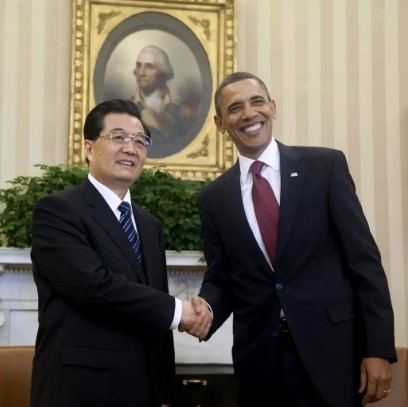
The "15 glorious years" of imperialist investment in China
Between 1992 and 2007, China's capitalist economy witnessed the "15 glorious years" of steady growth and expansion, and its consolidation as a submetropolis of imperialist capital. This period began with the rise of Jiang Zemin to power in 1992, replacing Deng Xiaoping, and then in 2004, when Jiang Zemin resigned and was replaced by Hu Jintao. This period saw the acceleration of FDI penetration, and with it, the profits of the imperialist global corporations, now associated with the CCP's oligarchy.
Jiang Zemin himself carried out money laundering operations from Jiangsu Province through projects funded by the central government, and thus masterminded the plan to privatize state-owned enterprises through state loans, partnering Chinese state-owned corporations with imperialist multinational corporations. Jiang Zemin's son, Jiang Mianheng, created Grace Semiconductor Manufacturing Corporation in 2002, appointing Neil Bush, brother of George W. Bush, then US President, as an advisor.
This is how the Chinese Communist Party oligarchy took over and privatized all state-owned companies in association with global corporations. The grandson of China's leader, Alvin Jiang, graduated from Harvard and was an official at Goldman Sachs, where he created the Hong Kong-based company Boyu Capital, which attracted high-profile investors such as the richest man in Asia, Li Ka-shing, and the Singapore sovereign wealth fund, Temasek Holdings Private Ltd. The concentration of investment and production led China, due to its size, to become the third largest capitalist economy in the world with a value of $19.5 trillion, behind the United States at $30 trillion and the European Union at $20 trillion, a Gross Domestic Product achieved through the development of production based on enormous amounts of imperialist investment, such as China's leading company, the oil company SINOPEC, associated with Exxon and the multinational corporation JP Morgan Chase .
Exxon and JPMorgan Chase have invested more than $3 billion in the Sinopec oil company since 2005, tripling the Fujian refinery's capacity from 80,000 barrels per day to 240,000. The second largest energy company, StateGrid, has been partnered with General Electric (GE) since 2011, when StateGrid's Wuhan Nari company entered into a strategic agreement with GE to modernize China's far-backed electricity grid. The third largest corporation, China National Petroleum Corporation, has been listed on the New York Stock Exchange and the Hong Kong Stock Exchange under the Joint Stock Company Law since April 2000. Its chairman, Zhou Jiping, was honored by the Texas Association of Engineers in 2015.
The 4th largest telephone and telecommunications company, China Mobile Hong Kong, was privatized and established in Tortola, British Virgin Islands , considered the largest privatization operation in Asia in 1997. The Industrial and Commercial Bank of China (ICBC) is the 5th largest Chinese company, associated with Goldman Sachs, Dresdner Bank and American Express. The rise of China opened the "15 glorious years" of unstoppable growth of the Chinese economy stimulated by strong imperialist investment. Through this economic structure it was established that China has multinationals, but does not have global corporations, that is, it does not have the capacity to determine the flow of capital on a global scale, for that reason China is not an imperialist country, that is, it does not have the capacity to dominate the world capitalist economy as do countries that have global corporations such as the United States, England, Germany, France, Japan, or Canada.
Following China's rise as a submetropolis of imperialist investment and capital, another structural change in the globalization regime occurred: the contribution of China's economy to the development of the US "twin deficits. " The US "twin deficits" are the trade and fiscal deficits, which develop simultaneously. The trade deficit results from the import of products from the same US multinationals located in developing countries, which exploit cheap labor, almost a third of which is produced in China. China exports a large part of its production to the US, which produces a trade deficit between the two countries in favor of China.
This is how US and G7 multinationals based in China make huge profits, first by obtaining cheap labor, and then by ensuring the placement of their products in the US market. In turn, the governments of China and the US have reached an agreement whereby, with the trade surplus that China obtains by selling its goods to the entire world, the CCP government acquires a mass of capital that it invests in US Treasury bonds. This allows US imperialism to have a large part of the capital that "leaves" the US to invest in China, "return" to provide funds to the US Treasury, which shows how the twin deficits work, since through them, the US finances its corporations, finances China, finances China's Corporations, and then finances itself through China.
This agreement between the governments of China and the United States is vital to sustaining the United States' twin deficits, which are a fundamental tool for supporting the global imperialist capitalist economy. The US's twin deficits allow it to sustain the entire global capitalist economy through the simple expedient of owning the large corporations that control capital flows on a global scale. Through deficits, it enables all countries in the world to support the dollar and the US Treasury by purchasing dollars. By positioning China as one of the largest holders of US bonds after Japan, it becomes a partner and supporter of the twin deficits, contributing to the financing of the US Treasury and establishing the dollar as a global safe haven currency, as it allows 80% of international transactions, 70% of global imports, and almost all oil trade to be conducted in dollars.
The fact that the US trade deficit is becoming the mainstay of the global economy obviously implies a colossal effort for the US economy to sustain the entire capitalist world. This also results in tensions between different wings of US imperialism, which debate over how much tariffs should be raised or lowered, which sectors of the economy should be protected, and how much of that deficit should be increased or reduced. This is the debate hidden behind, for example, the policy of raising tariffs for the entire world promoted by the Donald Trump administration between 2024 and 2025, where sectors of the US bourgeoisie are pushing for a certain "protectionism. This unstable circumstance of managing a deficit that plays a fundamental role in the development of the global capitalist-imperialist economy is one of the most important expressions of the US's notable hegemony over the global capitalist economy, and at the same time, a source of permanent crisis for all US imperialist governments.
But these "15 glorious years" of expansion, which consolidated China as a sub-metropolis of imperialist capital under the leadership of Jiang Zemin and Hu Jintao, transformed the CCP's high command into bourgeois oligarchs, while simultaneously developing one of the most powerful proletariats in history. Following Marx's prediction that capitalists create their own gravediggers, during this "glorious period," the Statistics Department of the Ministry of Human Resources and Social Security (MOHRSS) estimated that they built a "labor force of 937 million people" out of a population of 1.4 billion. This colossal proletariat emerged in a country where, in 1980, only 20% of the population was urban, a product of the massive rural-to-urban migration brought on by the incessant influx of imperialist investment. In turn, the growth and expansion of China's capitalist economy transformed it from a country with an essentially agrarian composition to one of great urban development, achieving that by 2010 half of the population lived in cities, according to data from the MOHRSS that you can read here. These political and social changes would give rise to the most important political changes that began with the collapse of the Chinese economy starting in 2007, changes of great importance that coincided with the rise of the current Chinese Premier, Xi Jinping.
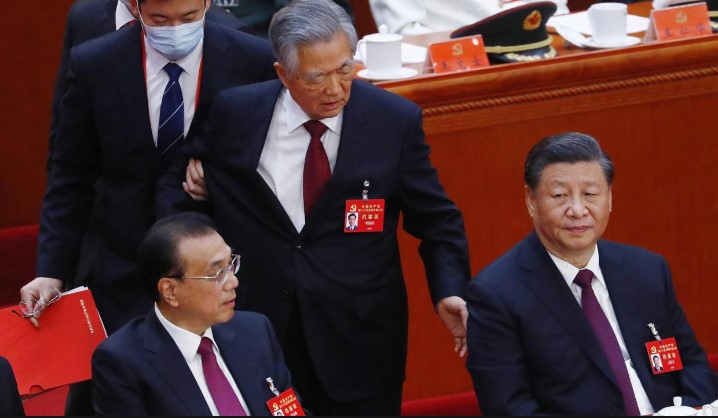
2007: The collapse begins and a huge crisis unfolds
But this succession of "glorious years" came to an end. With the bursting of the dot-com bubble in 2000, the current crisis of capitalism began, but things really got ugly for China when the sub-prime bubble burst, bankrupting global corporations between 2008 and 2009. The crisis hit China hard under Hu Hintao, who ended his term in 2012, giving way to the government of supreme leader Xi Jinping. All the imperialist governments of the world responded to the crisis of global capitalism with financial bailouts, and "bailouts" did the same in China, where the Communist Party government injected monstrous sums of money into Chinese companies and banks to save bankers and multinationals operating in the country.
This economic move by the People's Bank of China was part of an international division of labor undertaken by all the world's central banks to save imperialist corporations. The bailouts were implemented simultaneously by the US Federal Reserve (Fed), the European Central Bank (ECB), the Bank of Japan (BoJ), the Bank of England (BofE), etc. By flooding the banks with cheap money, the Communist Party government encouraged Chinese provincial and city governments to launch housing credit lines initially targeted at the bourgeoisie and the upper petite bourgeoisie. But the business grew exponentially, providing such significant profits that the credits began to extend to sectors of the working class and the common people. Thus, a boom in home purchases developed, taking advantage of the extremely low interest rates and the cheap price of the yuan.
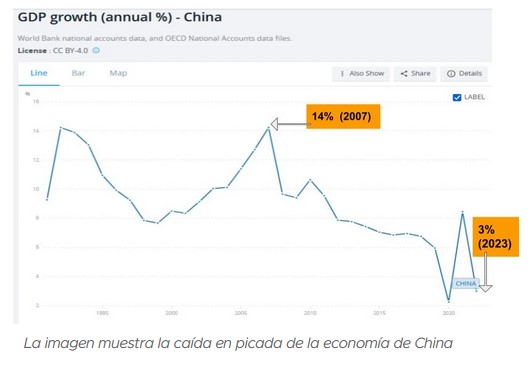
The images shows the fall of China economy. Source: World Bank
Home ownership and sales became a business for government and Communist Party officials, who grew obscenely rich. In turn, local governments decided to launch all kinds of businesses, from international tourist centers to cities modeled after major world capitals like New York and Paris. But following the laws of capitalism, the spectacular demand for homes, loans, land, construction materials, and bricks triggered inflation. Housing prices, due to high demand, began to rise, despite government policies to curb the price boom, with scandalous figures such as those on Hainan Island, where new homes in Haikou, the capital, saw a 64.8% increase.
Local governments rushed forward to evade the crisis: Beijing made lending more flexible, thus repeating exactly the same moves made by US imperialism when it created the spectacular subprime bubble . Since business could not be stopped, loans were granted to practically anyone, even if they did not meet the conditions required to obtain the loan. But as housing prices rose and rose, millions of people stopped paying their mortgages and lost their ability to access housing. The dictatorship of Xi Jinping and the Communist Party had no choice but to continue building and announcing mega-projects to allow the bubble to continue. As millions of people stopped paying their mortgages, China continued to build the planned housing, even though no one lived in it after its completion. This is how the shocking phenomenon of "ghost" cities arose: gigantic cities that are built in which no one lives.
Thus were born Ordos Kangbashi, the world's largest ghost town; Tianducheng, a Parisian imitation; the Chenggong District in Kunming, Yunnan Province; the New South China Mall in Guangdong Province; Yujiapi in Tianjin; and Zhengdong in Henan, to name a few examples, with millions of unoccupied homes. By 2009, housing prices had already doubled. By 2010, the Financial Times announced that the Chinese housing bubble was already worse than the one that burst in the US in 2007. Soon, Chinese housing prices exceeded the average income by 27 times, and later, five times the global average. Thus, China's "housing bubble" began to show spectacular figures, such as the price of a square meter in Beijing exceeding $3,000. But unlike what happened in the US, when massive defaults occurred, construction companies in China continued to build. The wheel could no longer be stopped, because if housing construction, the pharaonic megaprojects of cities, and all the necessary infrastructure are halted, millions of contracts from construction companies, brick factories, banks, financial institutions, cities, and provinces would be canceled, which could trigger a massive bankruptcy earthquake that would liquidate the country's capitalist economy. Goldman Sachs downgraded both the Agricultural Bank of China and the Industrial and Commercial Bank of China.
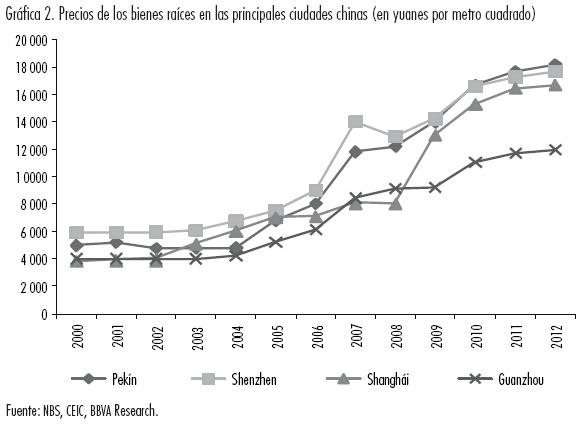
Unlike US imperialism, which halted the subprime bubble at the cost of destroying part of its own banking system because the banks and capital are its property, China cannot halt the development of the bubble it has initiated because it cannot make decisions regarding capital and property that are not its own, given that part of its banking funds are imperialist property. In turn, the bursting of the bubble and widespread bankruptcy would produce an uprising affecting millions of people. The United States experienced this situation, which it averted because it had a political alternative to the Bush Administration, and the Republicans, with the two terms of the Obama Administration, and the Democratic Party, to prevent a socialist revolution in the US. But China does not have that possibility because it is a one-party dictatorship, not a bourgeois democracy. There is no alternative to the Xi-Jinping regime and the Communist Party, hence the fall of the Communist Party, a product of the bursting of the "bubble." would accelerate the times of the socialist revolution in China, Asia, and the world.
The "China bubble" was centered on the crisis of Evergrande Group, or Evergrande Real Estate Group, the second-largest real estate developer in the country, which went completely bankrupt, potentially dragging down the entire Chinese financial system and part of the global system, such as real estate giants Fantasia Holdings Group Co., Central China Real Estate Ltd., and Guangzhou R&F Properties. Faced with the worsening crisis due to the risk of the real estate bubble bursting, an agreement was reached on August 26, 2022, between the Public Company Accounting Oversight Board (PCAOB), a corporation under the control of the United States Congress, with the China Securities Regulatory Commission (CSRC), and the Ministry of Finance of the People's Republic of China. The agreed Protocol allowed the PCAOB access to inspect and fully investigate, in accordance with U.S. law, the top 250 Chinese companies and their accounting firms based in mainland China and Hong Kong, in a text that you can read here.
In this way, US imperialism directly intervened in the Chinese economy to prevent the explosion. The signing of this Protocol between the PCAOB and CSRC meant a complete takeover by world imperialism, the US government agencies, and Wall Street, who began to control China's capitalist economy. The American officials and accountants of the PCAOB began to audit, supervise, and control the accounting books of all major Chinese capitalist companies, under the laws of the US imperialist state. If China did not sign the Protocol, its 250 companies listed on Wall Street would be delisted, which would have meant a brutal collapse of all major Chinese companies and a nosedive for the entire Chinese capitalist economy.
The crisis also began to provoke uprisings and struggles among the people of China and the people oppressed by the dictatorship of the CCP and Xi Jinping. The Uyghur people rose up, as did the people of Hong Kong, with first lines of self-defense to avoid repression. Both uprisings were brutally crushed, but waves of strikes and protests in Guangdong became widespread. While revolutionary processes, such as the one in Ukraine, which directly impacted Vladimir Putin's dictatorship, were developing, rebellions such as the "white paper" mobilization or the wave of strikes at Foxconn, a technology corporation that manufactures most of the world's iPhones, iPads, and PlayStations, began to sweep across China, leading to a hardening of Xi Jinping's dictatorship with brutal repression against the people.
For the revolution in China against the capitalist dictatorship of Xi Jinping
At the same time, summits between the US and China began to take place regularly and have become recurrent and frenetic, such as the prolonged summit of the governments of Joe Biden and Xi Jinping on November 15 and 16, 2022 in Bali, two months later, on January 16 and 20, 2023, another Summit in the city of Davos, Switzerland; with the presence of Liu He, Vice Premier of China , the visit to China of Antony Blinken, Secretary of State of the United States, on June 18, 19, and 20, 2023, the visit to Beijing of Janet Yellen, Secretary of the Treasury of the United States from July 6 to 9, 2023. The reason for the "multiplication" of Summits between the United States and China is the serious economic crisis and the danger of bankruptcy that threatens China, which went from a growth of 14% in 2007, to a drop of 3% in 2023, which puts the Chinese economy on the brink of recession. Recently, summits between Chinese and US officials in Madrid have been repeated, such as the one that took place on September 14, 2025, which culminated in agreements on tariffs, and the purchase of Tik-Tok from the United States by the imperialist government
When the global crisis of capitalism erupted with the widespread bankruptcy of global corporations, capitalist economists believed that the world's imperialist economies would collapse, while China and the BRICS would emerge and provide a global alternative to capitalism. Thus was born the "Decoupling Theory," which posited that China and the BRICS would "decouple" from US dominance and emerge to challenge for global hegemony. But reality did not unfold as the "decoupling" theorists predicted. As the global crisis of capitalism deepened, along with the fall of the major imperialist countries, so did the fall of the sub-metropolitans. In recent years, we have witnessed crises in China, India, Russia, and South Africa, which one after another began to fall into a deep crisis, with no way out in sight.
We Marxists maintain that the crisis has opened the stage of revolution in China. It is inevitable that workers and the people, gripped by the crisis, will begin to seek a response to Xi Jinping's dictatorship, riding the same revolutionary wave that Southeast Asian countries are experiencing in Nepal, Sri Lanka, India, Bangladesh, the Philippines, Indonesia, etc. The revolution is knocking on China's door, and it is time to put an end to the horrible capitalist dictatorship and the oligarchy of millionaires that controls it. Just as the crisis of capitalism has hit China, so too will the global revolutionary process, a moment that will be an exciting chapter in the global revolution. This work aims to thoroughly employ the theoretical tools of Marxism to establish a clear guide for action for the activists and revolutionaries who must gather in China and the region, to establish a bastion in the struggle for global socialism.


